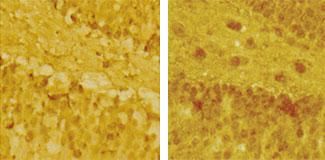Placenta size and offspring bone development linked
Researchers at the Medical Research Council Lifecourse Epidemiology Unit, University of Southampton, studied 518 children in the Avon Longitudinal Study of Parents and Children (ALSPAC) who underwent bone scans at nine, 15 and 17 years old. Measurements such as thickness, volume and weight, were also taken from the mothers' placenta.
The Southampton group, working with colleagues at the University of Bristol, found that greater placental size at birth was associated with larger bones at each age in childhood.
The study found that the relationship between the placenta and offspring bone remained robust even after adjusting for factors such as the child's height and weight and pubertal status.
The Southampton team believe this latest research offers new insights into earlier observations linking maternal factors in pregnancy with offspring bone health. Larger bones in early life are likely to lead to larger, stronger bones in older adulthood, which reduces the risk of osteoporosis and broken bones in later life. However, more research is needed to understand the more detailed mechanisms underlying associations between placenta size/function and offspring bone mass, the team says.
Professor Nicholas Harvey, Professor of Rheumatology and Clinical Epidemiology, who led the research in Southampton, commented: "Whilst there are many factors which are likely to influence placental size and function, and importantly, we don't know as yet whether a larger placenta actually causes the greater offspring bone mass, these findings really help us to understand the possible mechanisms whereby factors such as maternal diet, smoking, physical activity and vitamin D status may influence offspring bone development."
"This work builds on our previous findings from the Southampton Women's Survey, and demonstrates that positive associations between placental size and offspring bone size are maintained even through puberty."
Professor Cyrus Cooper, Professor of Rheumatology and Director of the MRC Lifecourse Epidemiology Unit, added, "This work forms part of a larger programme of research seeking to develop interventions in early life aimed at optimising bone development and reducing the risk of osteoporotic fracture in older age. Confirmation of our earlier Southampton findings in the Bristol cohort is testament to the close working between Southampton and Bristol collaborators, and demonstrates the clear benefit to UK science from such cross-cohort investigations."
Original publication
Holroyd, Christopher R and Osmond, Clive and Barker, David JP and Ring, Sue M and Lawlor, Debbie A and Tobias, Jon H and Smith, George Davey and Cooper, Cyrus and Harvey, Nicholas C; "Placental Size Is Associated Differentially With Postnatal Bone Size and Density"; Journal of Bone and Mineral Research; 2016
Most read news
Original publication
Holroyd, Christopher R and Osmond, Clive and Barker, David JP and Ring, Sue M and Lawlor, Debbie A and Tobias, Jon H and Smith, George Davey and Cooper, Cyrus and Harvey, Nicholas C; "Placental Size Is Associated Differentially With Postnatal Bone Size and Density"; Journal of Bone and Mineral Research; 2016
Organizations
Other news from the department science

Get the life science industry in your inbox
By submitting this form you agree that LUMITOS AG will send you the newsletter(s) selected above by email. Your data will not be passed on to third parties. Your data will be stored and processed in accordance with our data protection regulations. LUMITOS may contact you by email for the purpose of advertising or market and opinion surveys. You can revoke your consent at any time without giving reasons to LUMITOS AG, Ernst-Augustin-Str. 2, 12489 Berlin, Germany or by e-mail at revoke@lumitos.com with effect for the future. In addition, each email contains a link to unsubscribe from the corresponding newsletter.
Most read news
More news from our other portals
Last viewed contents
Consumerization Drives Growth at Merck Consumer Health - Double digit sales growth reported for Q1 2015

Wiggly proteins guard the genome - Dynamic network in the pores of the nuclear envelope blocks dangerous invaders
Lengthening time a drug remains bound to a target may lead to improving diagnostics, therapy
Beckman Coulter, Inc. Obtains CLIA Certificate, Licensure for Clinical Sequencing
Eppendorf AG posts a strong fiscal year 2019 - At 10.2%, revenue growth exceeds industry average
Flemish researchers develop revolutionary technology for use in plant breeding
New data on Novartis drug Zometa for treatment of breast cancer and multiple myeloma-related bone complications published

Clontech Laboratories, Inc. - Mountain View, USA

Windows of brain plasticity may help stress-related disorders
Benitec strengthenss Intellectual Property Position in Gene Silencing with more patents granted in Europe and the US

Tricking the novel coronavirus with a fake "handshake" - Scientists develop peptides that could inactivate coronavirus



















































